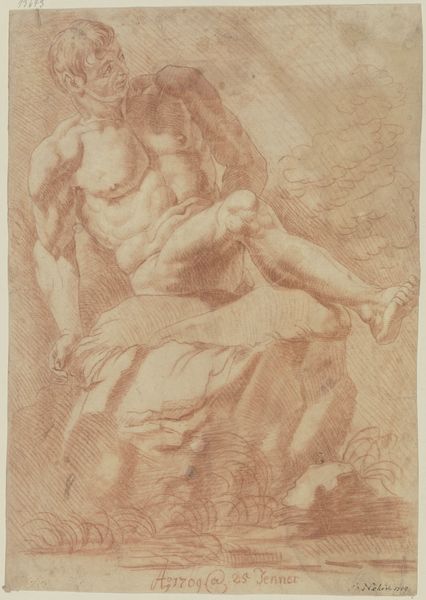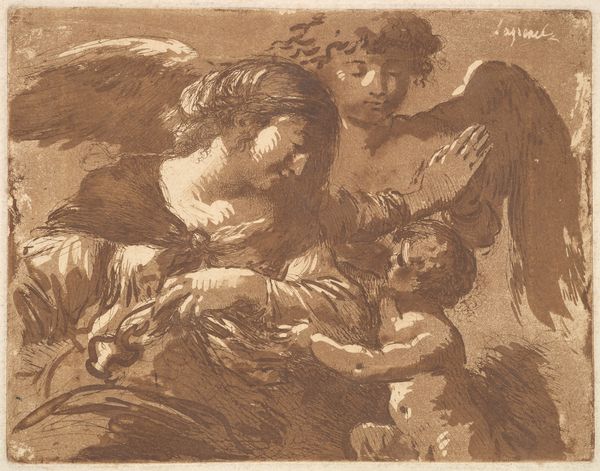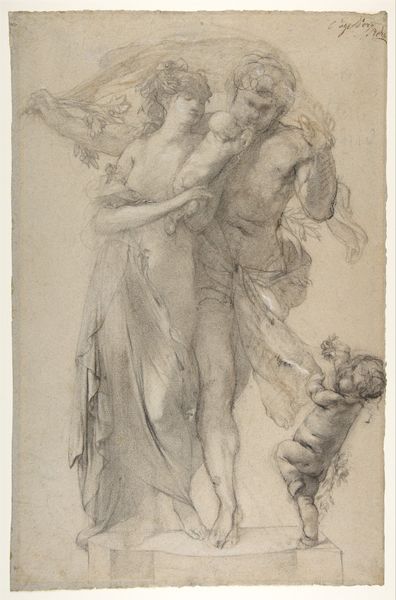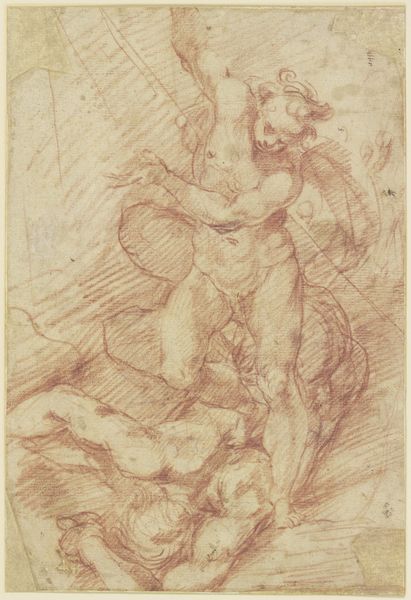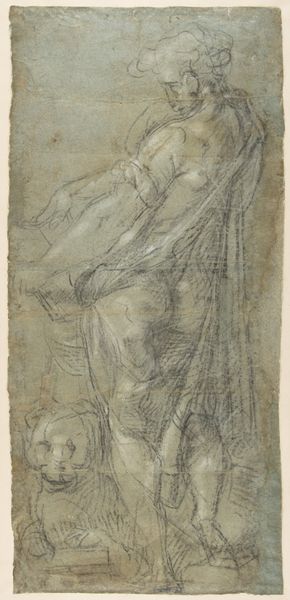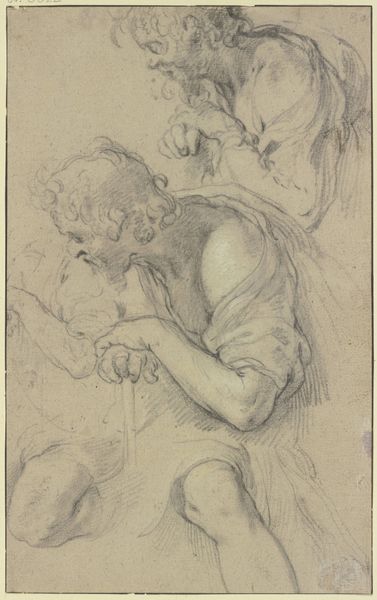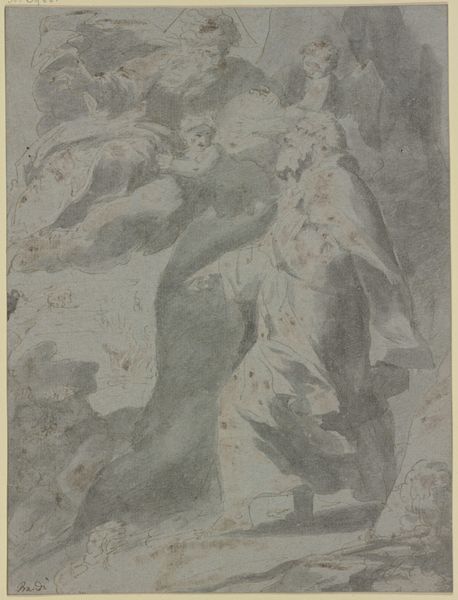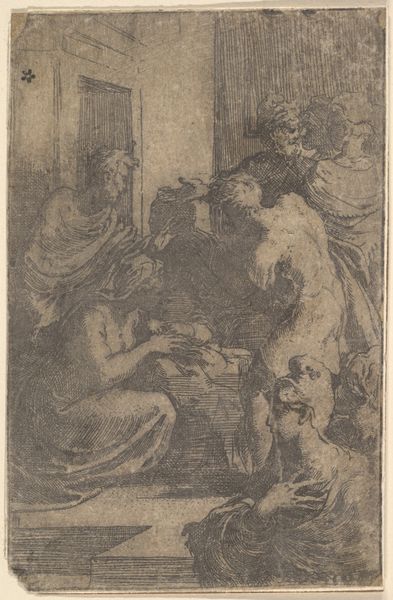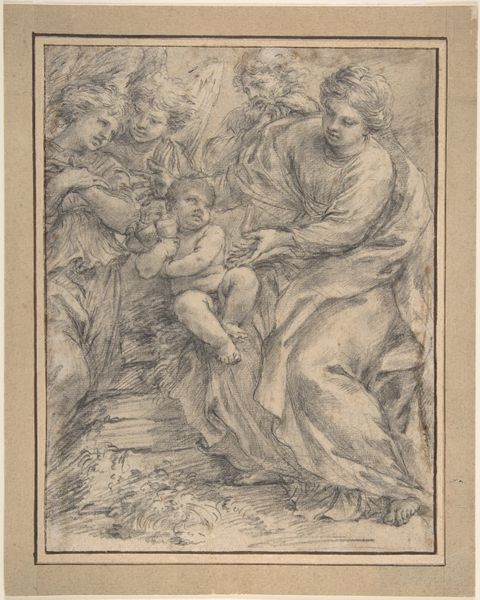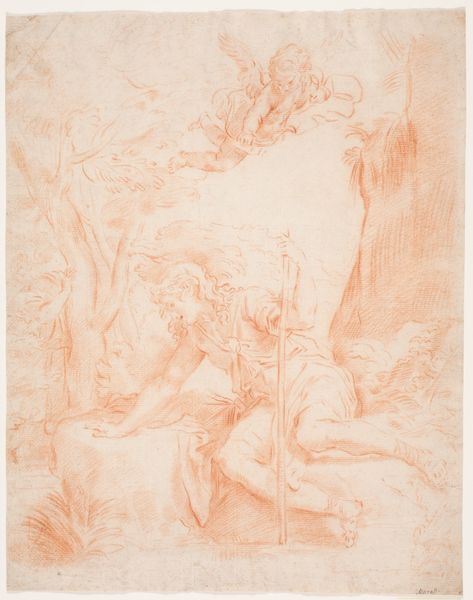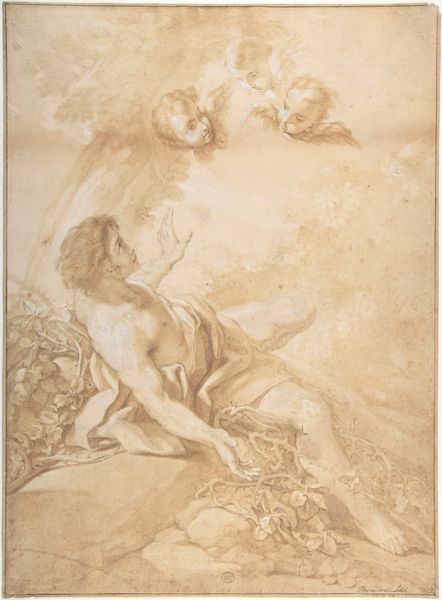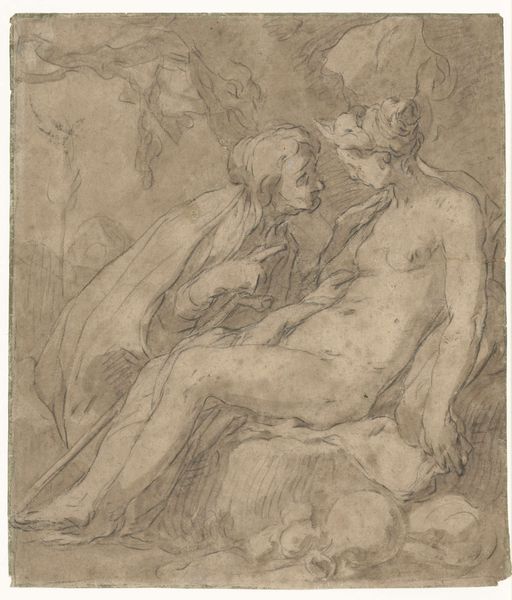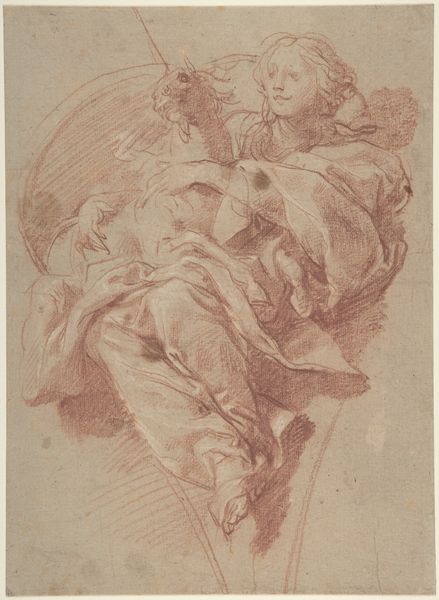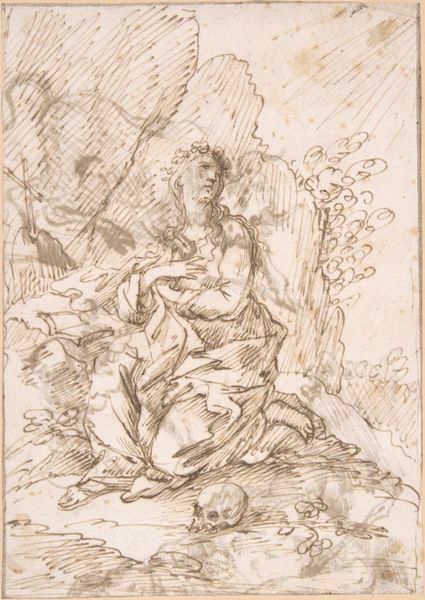
drawing, ink, charcoal
#
drawing
#
narrative-art
#
baroque
#
charcoal drawing
#
figuration
#
ink
#
flemish
#
charcoal
#
history-painting
Copyright: Public Domain
Editor: This drawing, “Judith Beheading Holofernes” by Peter Paul Rubens, was created around 1609-1610 using charcoal and ink. It has a really dramatic feel to it. I'm struck by the movement, but also the clear violence depicted. What's your take on this piece? Curator: Rubens really captures the drama and violence inherent in the biblical story. What interests me most, however, is thinking about the historical moment in which Rubens created this image. He positions Judith not just as a religious figure but as a powerful agent against tyranny, her actions imbued with political resonance. Consider the socio-political climate of the 17th century - rife with religious conflict and power struggles. How does that context influence our understanding of Judith's actions here? Editor: That’s a really interesting point about the political context. I hadn't considered that. So, it’s not just about the biblical story but about the ongoing power struggles of his time? Curator: Exactly. And it goes even further. Think about how the depiction of Judith resonates with contemporary feminist readings. Is she a symbol of female strength and resistance against patriarchal oppression, or does the violence complicate that interpretation? How do we grapple with the uncomfortable reality of violence enacted by a female figure? Editor: It's definitely complex. Seeing it framed as a commentary on power and gender makes it even more powerful, but also disturbing. Curator: Precisely. Rubens forces us to confront uncomfortable questions about power, gender, and violence. It's a testament to art’s ability to spark necessary conversations across centuries. Editor: This reframing completely shifts my perspective. I came in seeing just a violent scene, but now I see so much more about power, gender, and resistance, really woven into a pivotal historical moment. Thank you!
Comments
stadelmuseum about 2 years ago
⋮
The Book of Judith in the Old Testament tells of the siege of the Jewish fortress of Bethulia by the Assyrian commander Holofernes. When the besieged city was on the point of surrender, the beautiful and pious widow Judith visited the camp of Holofernes in the company of her maid. She succeeded in gaining his affection and trust, and when he had fallen into a drunken sleep at night, she took his sword and beheaded him. Bereft of its leader, the Assyrian army abandoned the siege. As a result of her triumph over evil, the heroic Judith is regarded by the Christian Church as a forerunner of the Virgin Mary.Rubens portrayed 'Judith and Holofernes' a number of times; the drawing in the Städel Museum is closely linked to his earliest painting on the subject. It was created in 1609-10 in Antwerp, after the artist's return from an extended stay in Italy and Spain lasting several years, during which he established a friendship with Adam Elsheimer in Rome. Rubens' original painting has been lost, but the composition has survived as a copperplate engraving.In the Städel Museum's drawing, Rubens laid out the composition with rapid, almost casual pen strokes and used generous brushwork and different shades of wash to give it depth and light. He then used his pen again to add a number of accents, such as the still life hinted at in the left foreground, which was probably meant to represent a helmet and sword, and the changed position of the sword. Rubens was interested in the way the two main figures are entangled: the figure of Holofernes, who has been dragged forward head first on his back, and Judith, who is clambering energetically over an upturned bench and swinging the sword above her head. On the right-hand edge of the picture we can make out Judith's maid, who is gazing back in fear. The masterly pen-and-ink and brush drawing served to test the overall effect of the composition, which was dominated by light and movement. Rubens reduced its wild momentum in the painting.
Join the conversation
Join millions of artists and users on Artera today and experience the ultimate creative platform.
